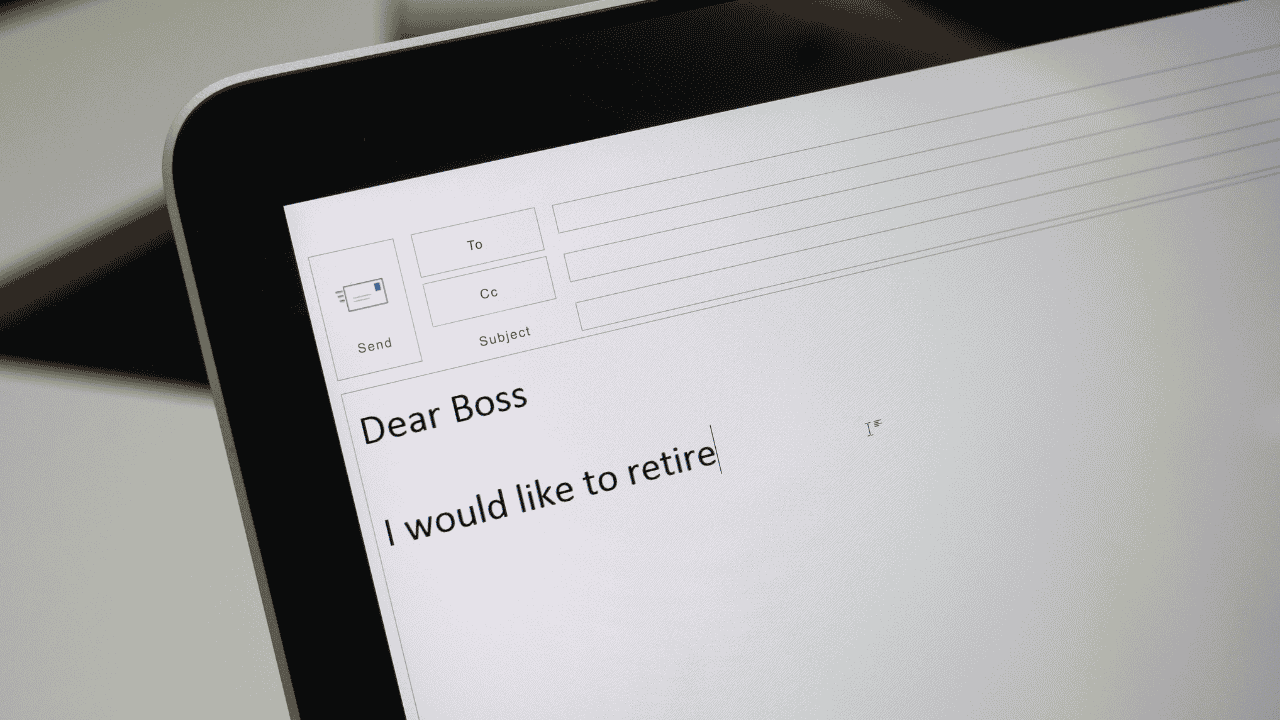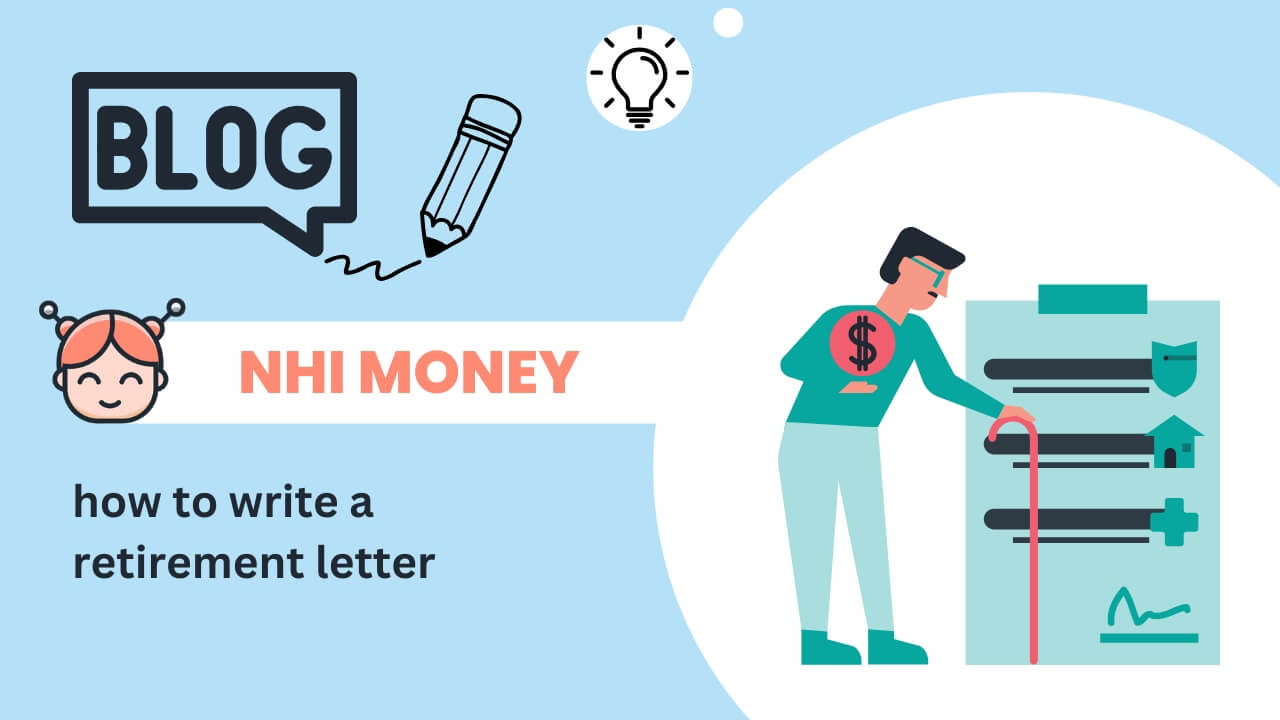How to Write a Retirement Letter: A Professional & Heartfelt Guide
Every professional should have a strategy in mind for how to write a retirement letter that meets legal requirements as retirement invariably comes with several obligations together with distinct goals. Such processes require a significant shift in how one thinks on a day-to-day basis. Your letter should, in some form, say how much you appreciate the company regardless of your duration at the service.
Table of Contents
ToggleWhy Does a Retirement Letter Matters?

An appreciation token, as one may call it, a retiring letter phrase should be adopted as it refers to how you want people to remember your work. Whether you decide to retire after spending decades in the workforce or having served a few years to gain experience, a well structured letter maintaining professionalism should eloquently state your value and the impact you created during your time with the firm. Even if the firm may not seek advice or assist them through peaceful terms on ground, they will still hold well structured relationships that make me valuable irregardless of the goals.
Key Elements of a Retirement Letter

In order to achieve closure as well as feel appreciated, a retiree must mark the final days with clear and respectful letters to every stakeholder involved as a way to show gratitude and professionalism. It allows the retiree to gracefully sign off while preserving relationships for any form of advisory assistance later on. Below are the key elements to include in your retirement letter to make it professional and comprehensive:
Formal Announcement
Your retirement letter should start with a formal declaration outlining your intention to retire. This formalizes the letter and makes sure that your employer comprehends the intent of your message immediately. The declaration has to be simple, and to the point as to avoid any ambiguity regarding your retirement.
Key information to include:
- Your position at the company.
- Name and details of the business.
- Effective date of your resignation.
For example: “I’m writing to notify you formally of my pending retirement with [Company Name] effective as of [Retirement Date]. It is within my considered best judgment that now is the appropriate moment for me to initiate the subsequent stage of my life.”
For some reason this concise wording helps the specific detailed professionalism of the letter, including the retirement intention.
Gratitude and Appreciation
Good thanking and acknowledgement are two of the most critical components of a retirement letter. It shows that you are professional and value the time you spent at the company.
Take a moment to acknowledge:
- Take a moment to acknowledge: Career development: What skills or experiences may you have gained from performing your work?
- Mentorship: Appreciate the people who have contributed in some ways to your career advancement.
- Teamwork and relationships: Appreciate other people that you have worked with in the past and how they contributed to your work.
For instance, “I’m extremely thankful considering how much has come my way while at [Company Name]. I’ve had the honor of working with some great people, and I’ve learned important lessons that have shaped my life in so many ways. Most importantly, I will be forever thankful to my co-workers and my mentors for their help and encouragement.”
This part of the letter has the objective of providing the recipient with a balanced impression of the message while underscoring that the time spent in the organization was indeed worthwhile.
Transition Support
From the standpoint of an employer, providing help with the transition when a former employee retires allows them to demonstrate professionalism toward the responsible handover of duties.
Anything that makes the process smoother is an asset for both the team and for an employer.
Some assistance with transition includes:
- Training your successor: In the event that you have already been chosen to replace someone, you might assist him or her.
- Documenting key processes: Compile step-by-step guides on how important actions/activities should be done.
- Post-retirement consultation: Inform the employer that you are accessible when needed after resigning.
For example: “I have no problem aiding with any part of the transition from training my successor to providing key documents and offering verbal guidance assisting the team in any needed capacity. Should you need support during this time do not hesitate to reach out.”
This statement emphasizes protecting the smooth transition process alongside professionalism when the team member approaches retirement.
This gesture reinforces your commitment to a smooth transition and demonstrates professionalism in your approach to retiring.
Contact Information (Optional)
If you would like to stay in touch with the company after retiring, your contact information could be provided, although optional. It may be useful for some colleagues and even your employer if they wish to contact you for consulting, networking, or other professional services.
What to Include:
- Personal email address.
- Phone number.
- LinkedIn profile or other social media accounts if you’re happy to maintain contact with work relations.
For example: “Please feel free to contact me at [Personal Email] or [Phone Number] if you ever need to reach me. I look forward to staying in touch and continuing to foster the relationships we’ve built over the years.”
This is an optional section that helps to guarantee that you can be reached if the need arises while ensuring that a professional affiliation with the organization is maintained post-retirement.
To summarize, your retirement letter should include the following:
| Element | Purpose |
| Formal Announcement | Clearly states your intention to retire and provides the effective date. |
| Gratitude & Appreciation | Expresses thanks for the opportunities, experiences, and relationships built during your tenure. |
| Transition Support | Offers assistance in transitioning your duties, ensuring a smooth handover. |
| Contact Information | Provides an option for staying connected after retirement (optional). |
Providing these specific elements means your retirement letter is detailed, properly structured, and gives the right impression.
Step-by-Step Guide to Writing Your Retirement Letter

A structured approach makes writing a retirement letter easier. For drafting a professional and heartfelt letter, follow this step-by-step guide, and you will write an excellent letter.
Step 1. Use a professional business letter format
A letter of retirement has to be prepared in a specific model business letter format. This should include:
- Your details: State your complete name alongside your mobile number and personal email address precisely at the beginning.
- Date: State the current date as of the time of writing the letter for record purposes.
- Recipient’s particulars: Write the name and title of either your manager or HR representative together with the company name and their address.
- Formal greeting: Maintain professionalism and start with Dear [Manager’s name] to address them respectfully.
Step 2. Start with a polite and clear statement about your retirement
Greet the reader and proceed with announcing your decision to retire. Your language must be professional.
- Example: “Please note that as from [Retirement Date] I will no longer be an employee of [Company Name]. I want to thank you for the support offered and assure you that I have given this decision careful thought.
- Do not provide faint hints. It is suggested that you extend a warm and friendly greeting while remaining courteous.
Step 3. Mention your retirement date to avoid confusion
Mention your last day at work very explicitly to eliminate any chance of ambiguity.
- Example: I would like to note that my last working day is planned for [Exact Date] including a period of [X weeks/months].
- Honor the company requirements when giving them a notice period and ensure that you have your retirement date synchronized as per their guidelines.
- If relevant, check for any pending vacation or leave entitlement balances and payouts.
Step 4. Express gratitude for your time at the company
Obtain a leave of absence for reflection of self as well as reflection for professional gratitude.
- Thank the employer for the contribution towards career progression, development, and even mentorship.
- Mention the people or teams who have influenced your career positively.
- Example: “I want to sincerely thank people for the sheer support and mentorship over the last [X] years. All the experiences and relationships I have built here will be cherished for the rest of my life.”
Step 5. Offer to assist in the transition process
Show professionalism by offering support in handing over your responsibilities.
- You can propose:
- Training your replacement.
- Documenting important processes.
- Being available for consultation if necessary.
- Example: “I am happy to assist in the transition process in any way I can, including training my successor and documenting key procedures to ensure a smooth handover.”
- Be specific about how long you’re willing to assist, but avoid overcommitting.
Step 6. Close on a positive and appreciative note
Wish them well, but emphasize on their continued great performance and the company expectation on their part for the completion of their letter and do not forget to keep the positive note words of optimism from last included as first word of the last sentence.
Example: “It truly gives me joy to know that [Company Name] continues to grow and even succeed. It will be great to stay in touch to see how their journey progress and if the pleasure of crossing paths again in the future will be there”
End with a signature alongside formal ending like, “Sincerely your Name“, or “Best regards Your Name“.
Stay tuned for the next sections, where we’ll explore retirement plan benefits, common mistakes to avoid, and retirement letter templates.
Further reading:
Benefits of a Non-Qualified Retirement Plan

For high-income earners and executives, a non qualified retirement plan is far more advantageous and flexible as compared to a traditional retirement savings plan. As opposed to an IRS qualified plan which has a regulated strict contribution limit, a non-qualified plan offers an array of flexible options. Non-qualified plans not only help employees but also employers by being customizable to structurally suit the needs of both entities, thus providing more opportunities for financial growth alongside several tax benefits.
The following are some of the best advantages of a non-qualified retirement plan:
Higher Contribution Limits
The best part of a non-qualified retirement plan is that there is no limit to how much an employee can contribute. This is in stark contrast to 401(k)s and IRAs that have strict rules regarding how much money can be put in per year. For high earners and high-ranking officials who have complicated retirement savings needs, non-qualified plans are perfect because of the flexibility they offer in terms of contribution limits.
Take, for example, a high-ranking executive who is earning a salary well in excess of the 401-k limit. It is likely that they would find the traditional-method savings options inadequate compared to their savings needs down the road. Non-qualified plans allow such individuals to set aside more than the $22,500 or $30,000 yearly capped limits, thereby easing their retirement worries. With gaps in income earned through work, these individuals stand to benefit the most from the retirement savings plans as they have the highest disparity between their income and the amount they need for retirement.
Flexible Payout Options
The flexibility of payout methods is another major benefit of a non-qualified retirement plan. Unlike many qualified retirement plans that come with strict payout calendars accompanied with penalties for early withdrawals, non-qualified plans put the decision in the hands of employees. Such flexibility is crucial for people who have precise retirement-related goals that require a specific timeline for funds.
For example, an employee may want to start receiving payouts over the years or receive them all at once to achieve specific goals and control their tax brackets. Furthermore, they may prefer to postpone payouts until a later age when their economic needs shift, allowing them access to funds at the most opportune time for their personal finances.
In some situations, employees have the option of selecting either a lump-sum payment or multiple payments, providing them greater control over their income post their employment. This flexibility enables non-qualified plans to meet diverse financial requirements, increasing their appeal to numerous professionals.
Employer-Controlled and Customizable
Another notable feature of non-qualified retirement plans is that they are designed and controlled by the employer. Business objectives such as staff retention and achieving certain goals enable for more customization which is possible only through non-qualified plans. Succession planning becomes possible through these types of frameworks and this serves as yet another purpose that non-qualified plans enable.
Companies can design customized retirement plans for senior management by offering enhanced features like higher contribution limits, flexible payout options, and tailored vesting schedules. They can also use non-qualified plans as a strategic tool to retain key employees—structuring payouts to occur after a defined number of years or upon reaching specific performance milestones.
Employers can also offer Supplemental Executive Retirement Plans (SERPs) or other non-qualified plans tailored for high-ranking employees. These plans can be organized to provide a higher return or more funding than offered to other employees which makes them advantageous for executive compensation schemes.
Potential Tax Deferral
Non-qualified plans are less enticing when it comes to their tax deferral features. However, they do offer a wide range of benefits. For one, tax is not applied to contribution payments according to non-qualified plans. This allows employees to push off paying taxes until withdrawal during retirement. This is particularly useful for individuals looking to decrease their taxable income during their highest earning years.
Tax deferral enables an employee to reduce their taxable income for the period with the plan contributions. This allows for lowering the tax liability in the short term. While funds in the non-qualified plan are growing, there is no taxation applied until the withdrawal. Individuals in higher tax brackets benefit the most as they are able to save more in taxes over the years.
Funds withdrawn from the account will be taxed, but because most people do enter a lower tax bracket when they retire. They do tend to withdraw with reduced taxes. This allows high income earners to set aside funds for retirement and build their wealth over time while deferring taxes on contributions.
Summary Table: Benefits of Non-Qualified Retirement Plans
| Benefit | Description | Ideal For |
| Higher Contribution Limits | Employees can contribute more than the limits set by qualified plans, allowing for larger savings. | High earners looking to save more. |
| Flexible Payout Options | Employees can choose when and how they receive payouts, including lump sum or installments. | Those needing flexible retirement income. |
| Employer-Controlled & Customizable | Employers can design plans to meet business objectives like retention and succession. | Companies aiming to retain key employees. |
| Potential Tax Deferral | Contributions are deferred until withdrawal, reducing taxable income in the short term. | High-income individuals looking for tax relief. |
Sample Templates: How To Write A Retirement Letter
Once you retire or approach retirement age, one key factor on a retirement plan is having a crafted letter that is appealing but also comes from the heart to ensure a positive exit. Your retirement letter is your communication of that decision while also expressing how thankful you are to your employer and looking to maintain the good ties you have so far. So below is how to write a retirement letter, a sample letter template.
Subject: Retirement Notification
Dear [Manager’s Name],
In this letter, I would like to communicate my official retirement decision from [Company Name], which will take effect on [Last Working Day]. After much thought, I believe it is time for me to transition into a new chapter in my life. I take this opportunity to thank you for the experiences and opportunities that have been rewarding for me during my time here.
Thank you for the mentoring and support, and the collegial friendships that I have been lucky to enjoy while working at [Company Name]. Together, as a team, I believe we have achieved a great deal. I will cherish my time here.
We all know there is a lot to accomplish before the retirement day finally arrives. In that respect, I will do everything possible to enable a well-planned transition. From training my successor to documenting necessary processes, providing ongoing support during this time, my commitment is to make this transition easy for the team.
Again, I appreciate all of the support provided. The colleagues I will miss and the unique working environment at [Company Name] will be hard to forget but I look forward to keeping in touch. Best of luck to you and the company for the future.
Sincerely,
[Your Name]
Common Mistakes to Avoid in a Retirement Letter

Being overly professional and having no mistakes when writing your retirement letter guarantees you a place of little to no confusion. Here are some of the mistakes to avoid:
- Insufficient notice: A well-crafted letter has relevance. Submit your retirement letter no less than 2-3 months in advance, allowing your employer sufficient opportunity to prepare for your exit.
- Negligent appreciation: Saying “thank you” on your exit in the company and when interacting with your colleagues is important lest you come across as neglectful. Appreciate the kindness the employer showed you and the experiences you had within the organization.
- Failure to mention last working day: Omitting this information creates ambiguity which can hinder proper retirement dates and plans from being set up.
- Lack of professionalism: Remember that while retirement marks a great personal achievement, the choice of words and phrasing has to remain professional.
- Failure to express willingness to help: Expressing such a view is known to create a lasting legacy impression.
When and How to Submit Your Retirement Letter
Understanding how to write a retirement letter is just half the process. Knowing when and how to submit the letter might just be as important.
Best time to submit
The appropriate time is 2-3 months before the letter is submitted. This ensures that there is ample time to execute role succession plans and prevent any disruptions in work continuity.
Who to send it to
- The first addresses of such retirement letters ought to be the line manager and HR personnel.
- If you have a senior or mentoring role, you may also decide to notify some colleagues or team members of your choice on an individual basis.
Delivery method
- Either an email or a letter works just fine.
- Emails provide instant access, while signed printouts are great for official record-keeping
Follow-up
- Once you have submitted your retirement letter, schedule a retirement meeting with your HR representative or manager to go over the transition details.
- Be ready to explain the preparation for a smooth transition, including primary responsibilities, training documentation for the new hire, and supporting materials.
You have set yourself up for an enjoyable retirement by following these guidelines on how to write a retirement letter and ensuring a respectful and professional exit.
You may also read:
FAQs
How do I gracefully retire from a job?
In retirement, gracefully allows professionals to step away from their work publicly while simultaneously shifting roles from head to devotee seamlessly while showcasing extreme appreciation. As the big day approaches, you take center stage by drafting a retirement letter—formally notifying the company well in advance and thoughtfully highlighting your time there. This proactive step helps create favorable conditions to support your professional goals even after retirement.
How long should a retirement letter be?
In accordance with standard operating procedures, a company may have its own custom policies on the retirement letter. A retirement letter should be, at best, a single page while remaining clear and complete. In such a letter, you need to state your intention to retire. Say thank you for the memories at the company, and mention your last working day. Make sure to express true appreciation for everything, and offer help. Help is always welcomed. You should balance professionalism and sincerity.
Can I change my mind after submitting my retirement letter?
It might be a bit challenging to change your mind after you submit the retirement letter. In some cases, this is difficult, but I wouldn’t call it impossible either. In case you have reconsiderations, make sure you speak to them the earliest before the cutoff date. Make sure to express your desire to stay and how they may want to deal with this very emotionally loaded request. Do remember that a retirement letter designates a formal intent indicating an exit which will indeed modify, among many things, timelines, resources, and relations.
Should I mention future plans in the letter?
Retirement letters do not have to include personal goals. You can share general information, but this is also completely voluntary. You may consider family members and even friends as hobbies. But be sure to keep the retirement letter professional and focus on expressing gratitude. And the offer of assistance comes into play during the transition phase. If you prefer to keep your future plans private, there’s no obligation to include them.
Conclusion about how to write a retirement letter
In summary, professionally prepared retirement letters serve a very important purpose. Because they allow an employee to thank their employer and leave on good terms. If you follow the steps in this guide, you will have a retirement letter that is both professional and striking, expresses thanks, and makes an unforgettable impact. This not only shows class, but also helps the company to a certain extent. Make your last communication stand out. And you will have untarnished professional connections and eyes in good standing clear your legacy will be remembered.







